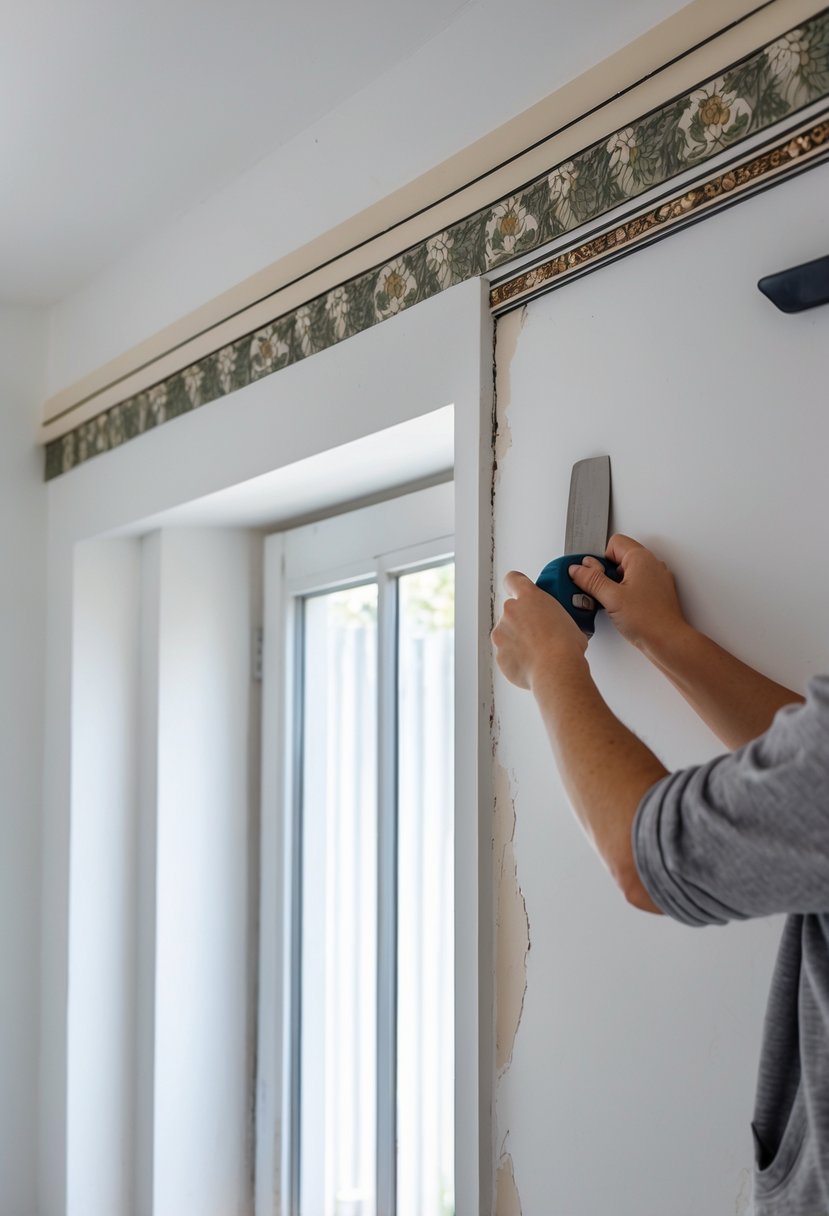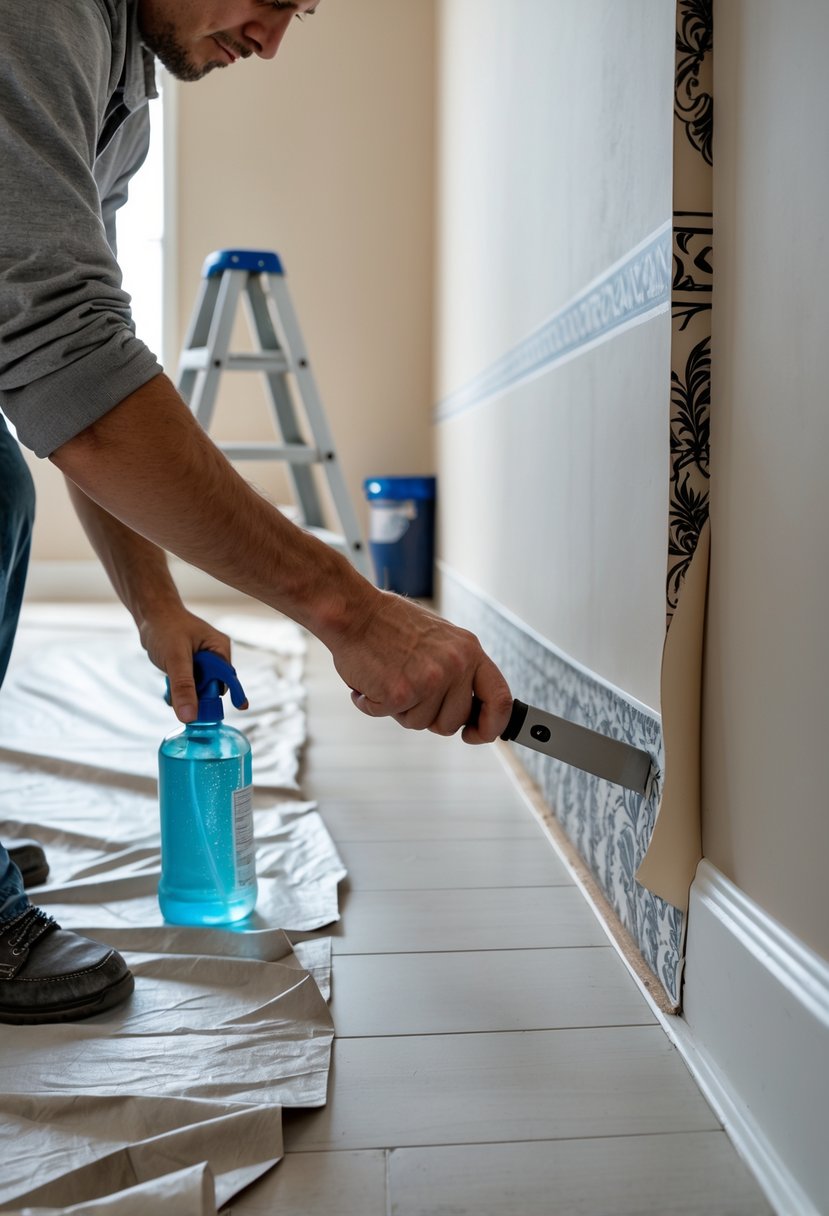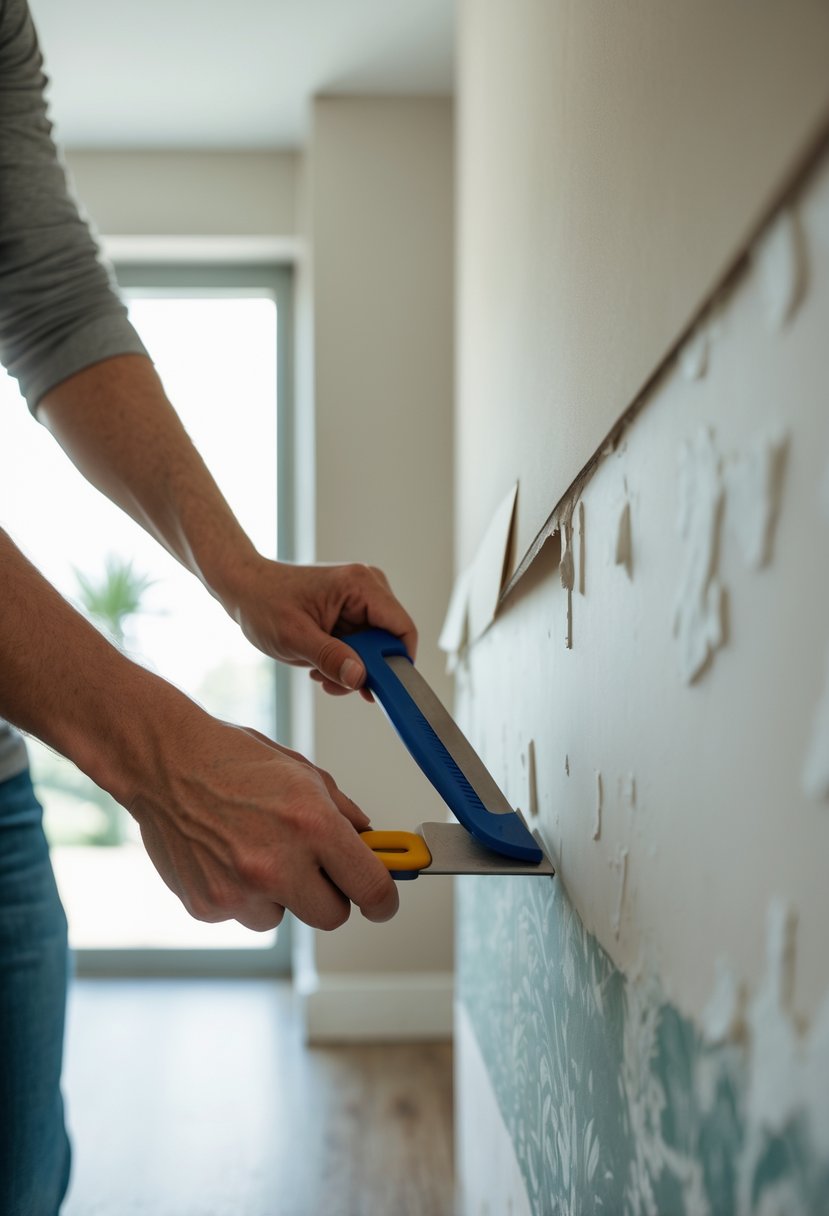How to Remove Wallpaper Border Quickly and Without Damage
Removing a wallpaper border can seem tricky, but it’s something anyone can do with the right approach. The key is to soften the adhesive using water, steam, or gentle heat before carefully peeling or scraping the border off. This helps prevent damage to your walls.

I’ve found that using simple tools like a spray bottle, scraper, and sometimes a steamer makes the job easier. Knowing how to prepare the surface and when to use each method can save time and effort.
If your wallpaper border is old or stubborn, patience and a little technique go a long way. I’ll walk you through easy ways to remove it while keeping your walls in good shape.
Preparation for Wallpaper Border Removal

Before starting, I focus on gathering all the tools I need and taking steps to protect the areas around the wallpaper border. This helps the process go smoothly and keeps my walls and floor safe.
Gather Necessary Tools and Materials
I make sure to have everything ready before I begin. The main tools I use include:
- A scoring tool to lightly perforate the wallpaper
- A spray bottle or sponge filled with warm water or a wallpaper remover solution
- A putty knife or scraper to gently lift the border
- A hair dryer or steamer to loosen stubborn adhesive
- Drop cloths or old towels for the floor
- Mild detergent and warm water for cleanup
Having these items on hand saves time and makes it easier to remove the wallpaper without damaging my walls.
Protect Surrounding Areas
I always cover the floor beneath the wallpaper border with a drop cloth or plastic sheet. This catches any water, adhesive, or debris that may fall during removal.
I also tape plastic or paper around baseboards, switches, and outlet covers to prevent water damage and keep these areas clean. Protecting furniture and nearby items by moving them or covering them with sheets avoids accidental messes.
Taking these precautions keeps the workspace neat and stops extra cleaning after the job is done.
Effective Methods to Remove Wallpaper Border

Removing a wallpaper border requires patience and the right approach. I focus on methods that avoid damage and reduce cleanup time. Some techniques work best on newer wallpaper, while others handle older, stubborn borders better.
Dry Stripping Technique
Dry stripping works well on borders that are loose or lightly attached. I start by trying to peel the border from one corner without using any water or chemicals. Using my fingernail or a putty knife, I gently lift the edge.
If the border comes off in large pieces, I keep peeling slowly to avoid tearing. This method is the cleanest since it doesn’t involve moisture that can damage walls. However, dry stripping only works if the adhesive has weakened over time.
If paper or glue resists, I stop and switch to a wetter method to avoid wall damage. This technique saves time when conditions are right.
Using Wallpaper Removal Solution
When dry stripping fails, I use a wallpaper removal solution. You can buy these in spray or liquid form. I apply it directly to the border, letting it soak for 10 to 15 minutes.
The solution breaks down the glue, which makes the border easier to lift. I use a scraper or putty knife to carefully remove the wallpaper. It’s important to keep the wall damp but not soaked.
After removal, I wipe the wall with a damp sponge to get rid of residue. This method works well on painted or drywall surfaces but needs some patience as you wait for the solution to work.
Applying Steam for Easier Removal
Steam is very effective on tougher wallpaper borders, especially older or multiple-layered ones. I use a handheld steamer that releases hot steam directly onto the wallpaper border for about 20-30 seconds.
The steam softens the adhesive, making it easier to peel with a scraper. I move slowly to avoid over-saturating the wall.
Steam works best when combined with gentle scraping after several passes. It’s a safe method for most walls because it doesn’t use chemicals, but I make sure the wall dries well afterward to prevent moisture damage.
Dealing With Stubborn Adhesive Residue
After removing the border, sticky glue often remains on the wall. I tackle this residue with a mix of warm water and mild soap or a commercial adhesive remover.
Using a sponge or cloth, I scrub gently to avoid damaging the wall surface. Sometimes a plastic scraper helps to lift tougher spots.
If residue is thick, I might repeat the process or apply warm water and let it sit a few minutes before scrubbing. This step is crucial for preparing walls for painting or new wallpaper without uneven texture.
